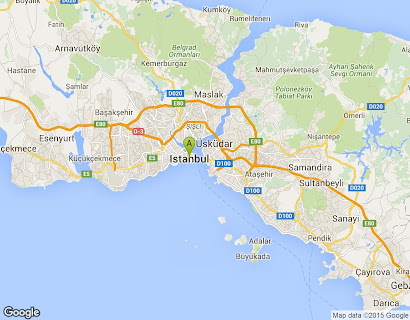türkçe links to original Turkish article
(Milliyet Newspaper, 24 August 2020)
Vikings in Istanbul click here for TNT
reporting on this subject.
Vikings on the Med coast click here for
another TNT report.

The Bathonea archeological excavation on the shore of Küçükçekmece
lake in Istanbul has revealed a port colony of the Vikings that existed
from the 8th to the 11th centuries. In addition, remnants from great
Istanbul earthquakes in the 6th and 11th centuries have been found.
Prof. Dr. Blazej Stanislawski, an expert on Byzantine and Viking
history, noted that "we have found 7 archeological proofs belonging to
the Vikings along the shore of the lake."
Excavation leader Dr. Şengül Aydıngün noted that as of the 12th century,
the Bathonea port suffered the same fate as the Theodosius port at
Yenikapı - after the Latin invasion of Istanbul both ports were abandoned
for a long period.
Dr. Aydıngün added that "it seems that during Ottoman times a portion
of Bathonea was used as a shipyard. The rock-terraced shores that
surround the lake and other aspects of the shore were well-suited for the
fleet. The lake's access to the Sea of Marmara was crucial, but also its
protected lagoon feature for shielding the ships from bad weather was
equally important."
Dr. Stanislawski, upper right, and his great-
grandfather Edward Prince Raczynski
(1786-1845), a general in Napoleon's army
who visited Istanbul and Çanakkale in 1819,
at bottom left.
As for the Vikings, both they and the Russian Varangians came to
'Constantinople', initially in small groups as traders and mercenaries,
settling beyond the city's walls at Bathonea between the 8th and 11th
centuries. According to the book 'Nestor's Chronicle', the Vikings and
Varangians were only allowed to enter the city in groups of no more
than 30-35 people, escorted in by soldiers in the morning and exiting
at sunset the same way. The Byzantines feared the northerners might
try to seize Constantinople so they were permitted to live in a port
near the Ayamama stream, a 20-kilometer waterway that empties into
the Sea of Marmara, east of Küçükçekmece lake.
Dr. Stanislawski explained further that "based on our findings, the
Vikings and the Russian Varangians established a settlement at
Bathonea, although we cannot yet say precisely where. The port
was an international one, segregated for those who were not allowed
to enter Constantinople. The Viking-Varangian settlement was near
the St. Mamas Church, west of Ayamama stream. Eleven bricks with
the seal of St. Mamas have been found at Bathonea."
"In an 11th century text, it says that mercenary Vikings awaited
Byzantine Emperor Michael VII at Bathonea. An amber cross has
been found at Bathonea and in those days amber came only from
northern Europe."


Hiç yorum yok:
Yorum Gönder